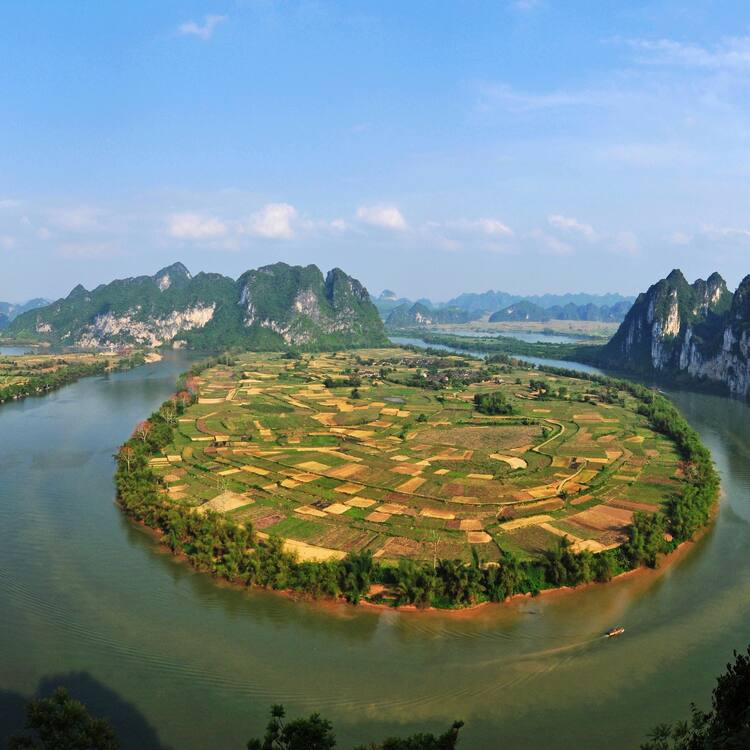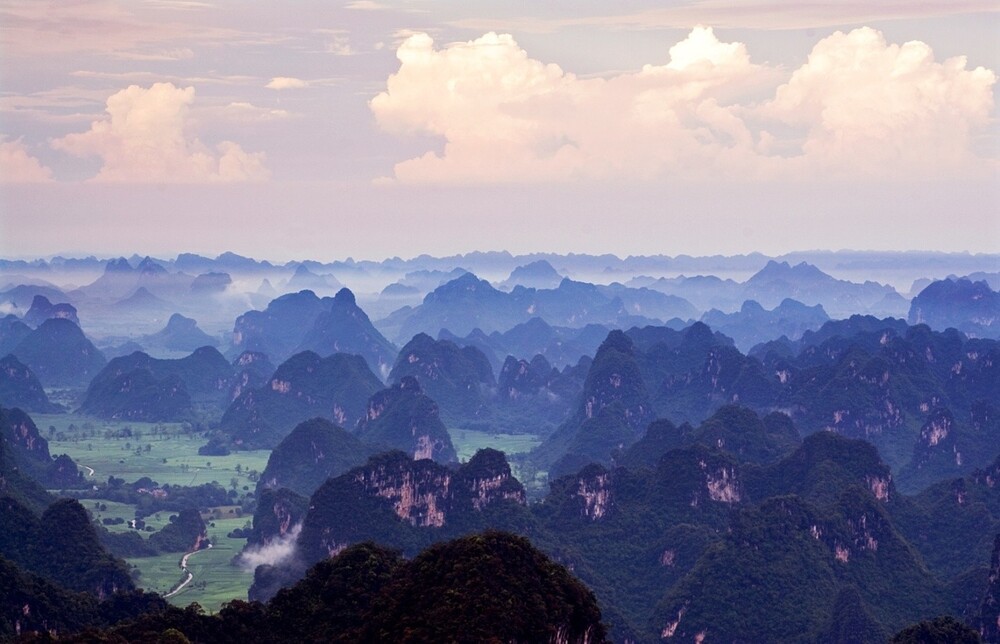Zuojiang Huashan Rock Art Cultural Landscape

Located on the steep cliffs in the border regions of southwest China, these 38 sites of rock art illustrate the life and rituals of the Luoyue people. They date from the period around the 5th century BCE to the 2nd century CE. In a surrounding landscape of karst, rivers and plateaux, they depict ceremonies that have been interpreted as portraying the bronze drum culture once prevalent across southern China. This cultural landscape is the only remains of this culture today.
Dating from around the 5th century BCE to the 2nd century CE, 38 sites of rock art and their associated karst, riverine and tableland landscape depict ceremonies that have been interpreted as portraying the bronze drum culture once prevalent across southern China. Located on steep cliffs cut through the karst landscape by the meandering Zuojiang River and its tributary Mingjiang River, the pictographs were created by the Luoyue people illustrating their life and rituals.

Each site enclosed by mountains and rivers has preserved the rock art in its folds for over 2000 years. The location and setting of the rock art is authentic. The rock art is generally located high up on the cliffs, revered by the local inhabitants and although subject to weathering over time is authentic in terms of materials and substance. The motifs and figures of the rock art were related to the beliefs of the inhabitants of the area surrounding them. Today the painted mountains are revered by local people and rituals and sacrifices are performed to appease the invisible forces affecting their lives.